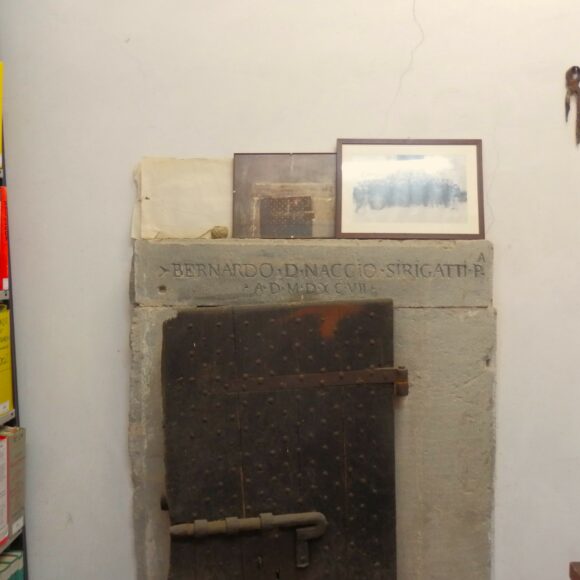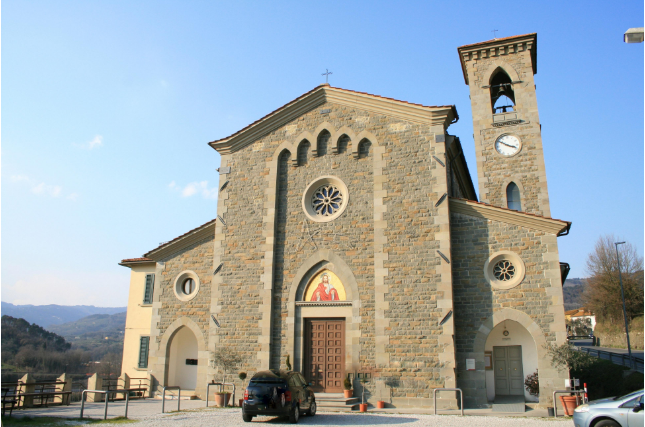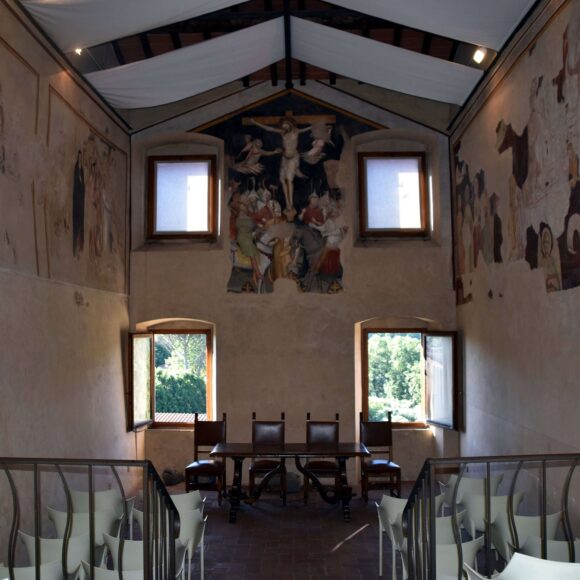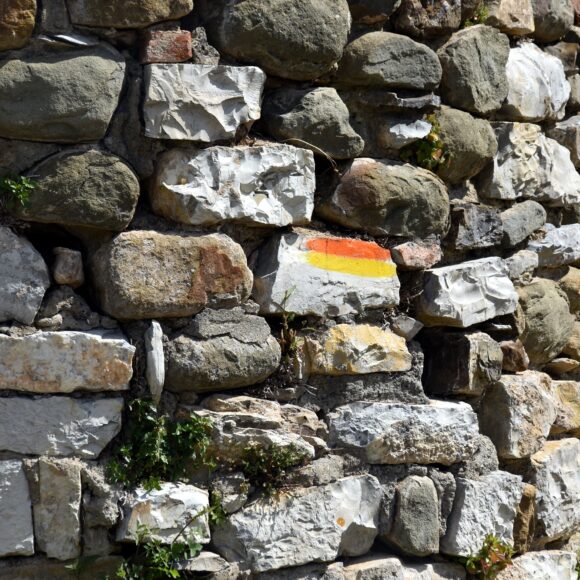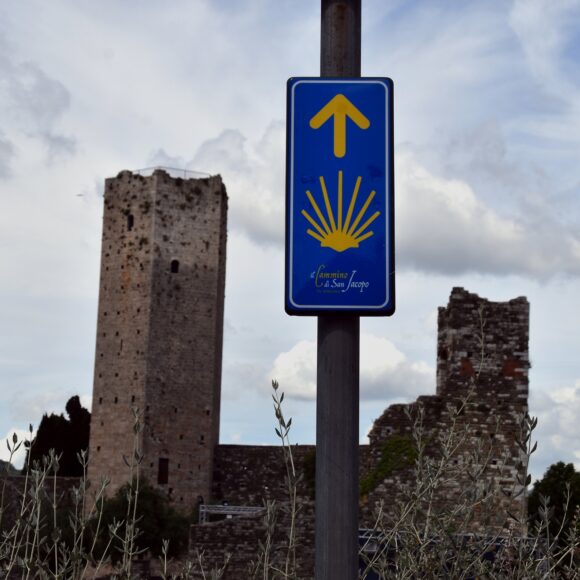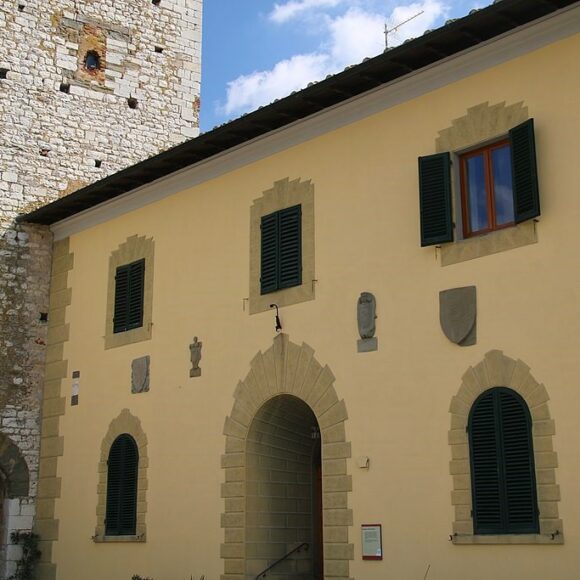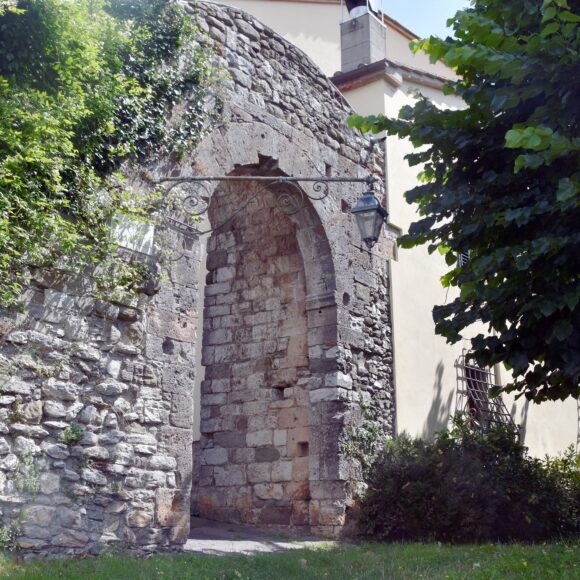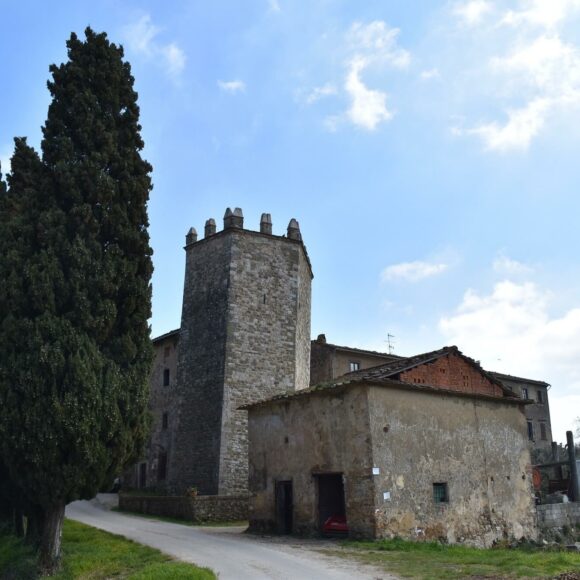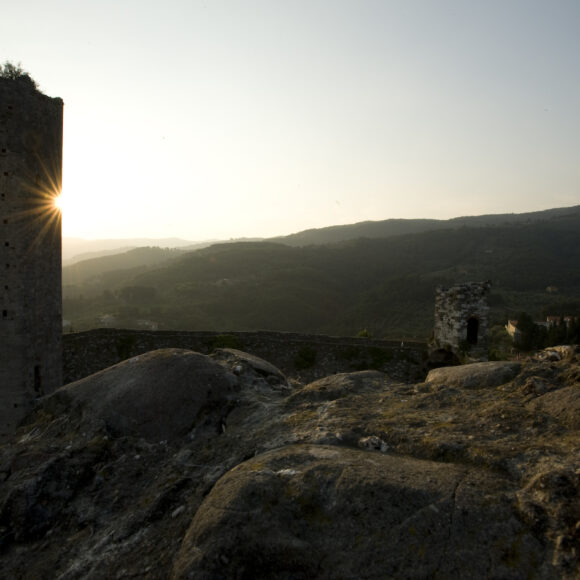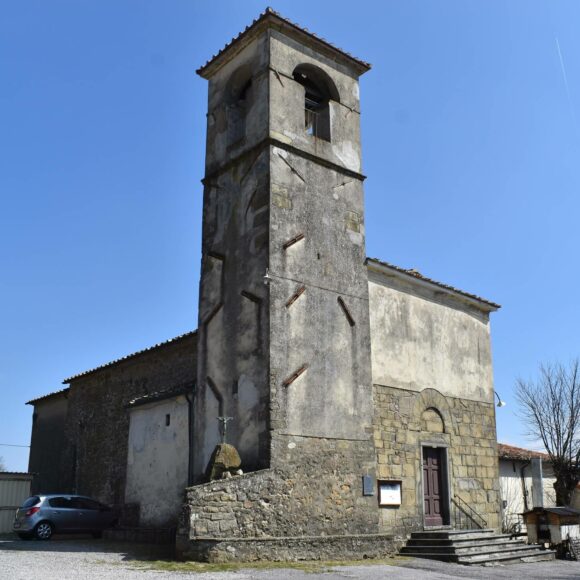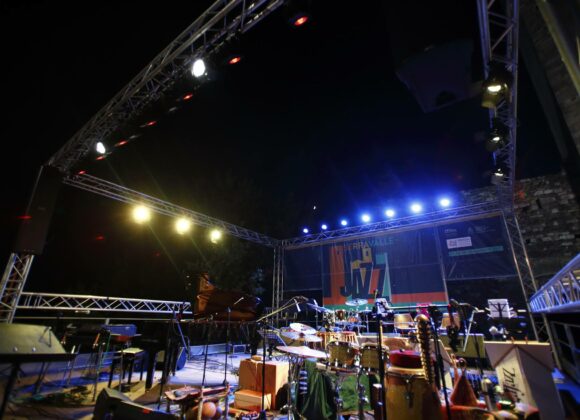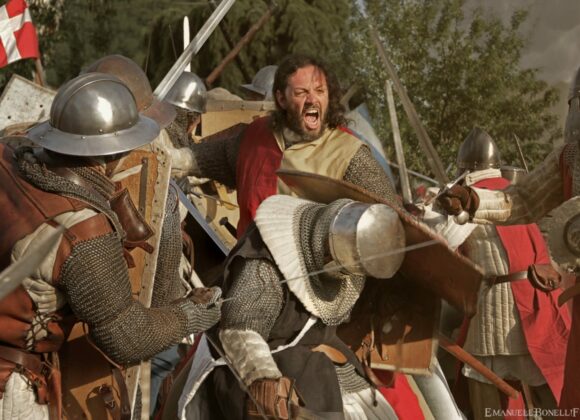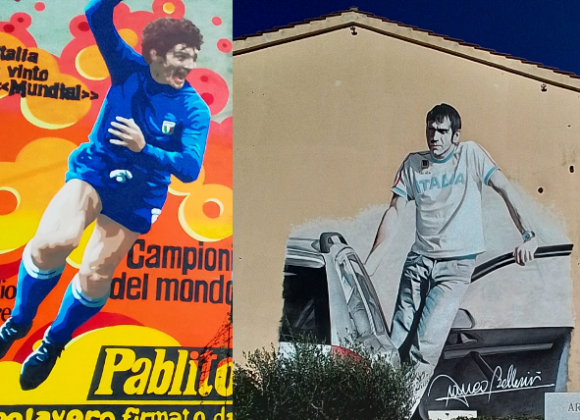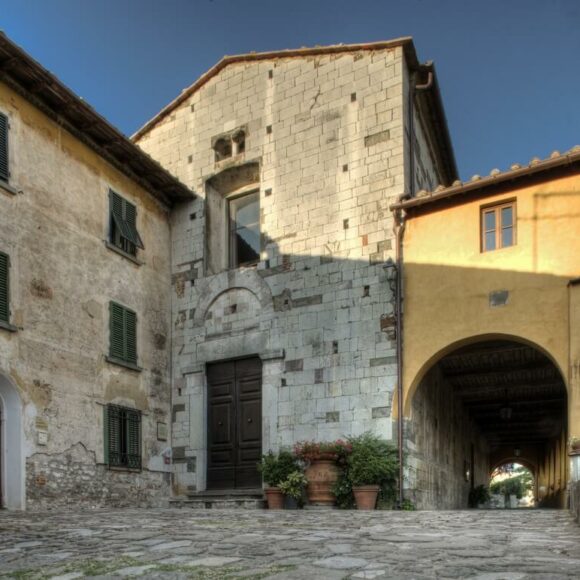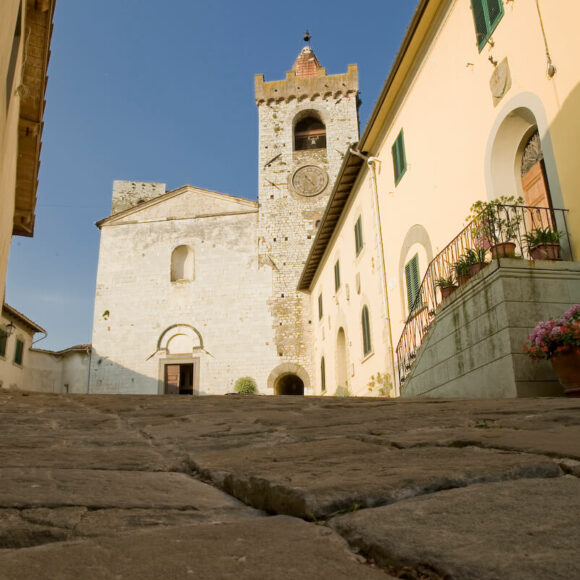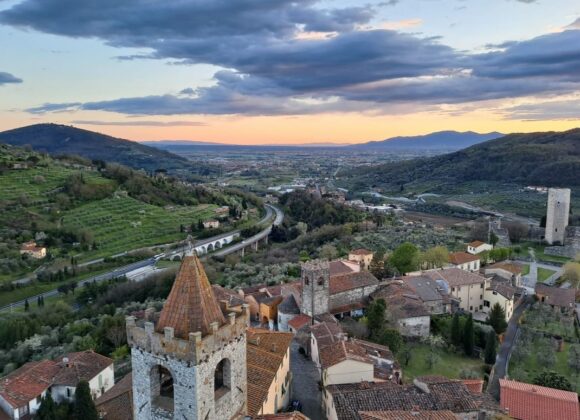Home / Discover / Casalguidi / Chiesa di San Pietro
The church of San Pietro in Casalguidi, steeped in history and legend, preserves Renaissance masterpieces, an ancient organ, and memories of centuries-old religious traditions.
The Church of San Pietro in Casalguidi is one of the oldest piece in the Pistoia countryside, known since the early 12th century. Its current appearance results from transformations and expansions in 1759, which altered the original Romanesque structure. On the southern wall, the 18th-century rectory is attached, with its present courtyard, a remnant of the medieval cloister of the collegiata.
Inside the piece, a 16th-century panel painting is preserved, depicting the Assunzione della Vergine fra i Santi Pietro, Tommaso, Giovanni Battista e Leonardo (Assumption of the Virgin with Saints Peter, Thomas, John the Baptist, and Leonard) by an anonymous Pistoiese painter. The Virgin hands Saint Thomas her belt (cintola), which is venerated in the Cathedral of Prato, while Saint Peter turns toward her in awe. Saint John the Baptist gestures towards the Madonna, gazing outward from the painting, while beside him stands Saint Leonard, the patron saint of prisoners, symbolized by the presence of a chain, his iconographic attribute.
The church also houses an important Agati-Tronci organ, restored in 1898 and again in 1985.
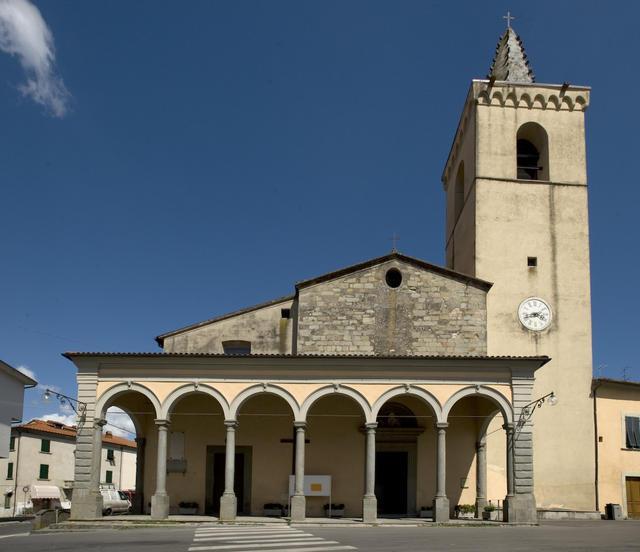
However, the most significant artwork is the Sacra Conversazione con i Santi Pietro, Sebastiano, Cosma e Silvestro (Holy Conversation with Saints Peter, Sebastian, Cosmas, and Sylvester), painted by Leonardo Malatesta of Pistoia between 1518 and 1521.
The altarpiece was commissioned by the Opera di San Pietro for the church’s main altar, from where it was later removed and placed on the left altar.
On the right, in the foreground, Saint Sisto is depicted, followed by Saint Cosmas. The presence of Pope Sisto is linked to the Lenten tradition known as the “wolf’s fast”, an ancient custom of fasting on the last day of the year, associated with the arrival of wolves and bears descending from Montalbano to the plains in winter in search of food. Pope Sisto, who served from 314 to 335, established a fast to be observed on specific days of the year.
According to a miracle recounted by Jacopo da Varagine, Saint Peter appeared to Sisto before his encounter with the dragon, guiding him on how to tame the beast and instructing him to visit him afterwards to share the bread he had prepared.
This fasting tradition was observed by locals until 1586 when it was declared a superstitious practice.
Experience the territory


